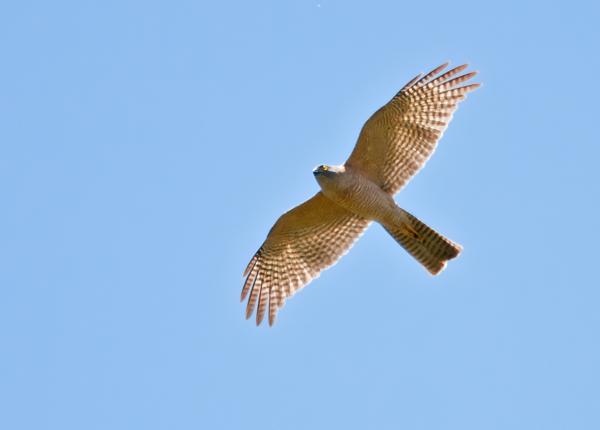Did You Know?
- There are two recognized subspecies of the Collared Sparrowhawk
How The Peregrine Fund is Helping
Though The Peregrine Fund doesn't work directly with Collared Sparrow hawks, our efforts in scientific research, habitat conservation, education, and community development help conserve raptors on a global scale. We also supply literature to researchers from our avian research library, which helps scientists around the world gather and share important information on raptor conservation. Our support of the Global Raptor Information Network gives raptor researchers tools to more efficiently conduct their own studies while contributing to a global program. It also provides citizen scientists a way to participate in raptor science and conservation.
Where it Lives
Found in Australia, Tasmania, and New Guinea, this sparrow hawk makes its home in a wide variety of habitats including forest, savanna, woodland, scrub, disturbed open forest, forest edges, eucalyptus stands, pine plantations, farmland and even urban areas.
Why it Needs our Help
The Collared Sparrowhawk is categorized as a species of Least Concern. However, this doesn't mean that it isn't facing threats. It is threatened by an increase another bird's - the Pied Currawong's - population. This passerine sometimes kills nestlings, or steals food from the adults. It is also sometimes shot or trapped in its range.
What it Eats
This species has a varied diet. It preys on small birds, lizards, insects, and even small mammals. It uses a number of different hunting techniques including quick flights through the air, perching on a hidden perch behind foliage, waiting for prey to pass by, or by flying low and fast in search of prey.
Nests, Eggs, and Young
The Collared Sparrowhawk builds a stick nest, which it lines with green leaves. The nest is generally placed in the fork of a tree. The female will usually lay between 3 or 4 eggs, which are white, and sometimes decorated with a few brown blotches or spots. The eggs will need to be incubated for around 35 days, before the young hatch. When they do, they are covered in white down. But, in only a month or so, they will be big and strong enough to fly from the nest for the first time. Once they fledge, the young will stay with the adults for around six weeks as they learn to survive on their own.
Collared Sparrowhawk and the World Center for Birds of Prey
The World Center for Birds of Prey offers fun ways to learn about birds of prey. The visitor center offers interactive displays, tours, interesting videos and a children's room with activities from coloring sheets to quizzes to costumes and a touch table - all available for the curious mind. We also have several different birds of prey on display year-around. Knowledgeable staff and volunteers are on hand to answer any questions you may have about Collared Sparrowhawks or any other birds of prey.
References:
Debus, S. and J. S. Marks (2020). Collared Sparrowhawk (Accipiter cirrocephalus), version 1.0. In Birds of the World (J. del Hoyo, A. Elliott, J. Sargatal, D. A. Christie, and E. de Juana, Editors). Cornell Lab of Ornithology, Ithaca, NY, USA. https://doi.org/10.2173/bow.colspa1.01
Global Raptor Information Network. 2022. Species account: Collared Sparrowhawk Accipiter cirrocephalus. Downloaded from http://www.globalraptors.org on 28 Sep. 2022









